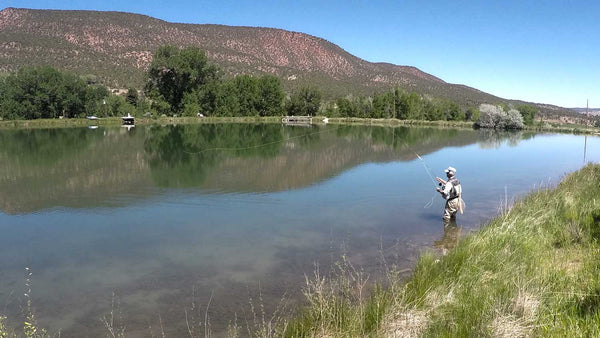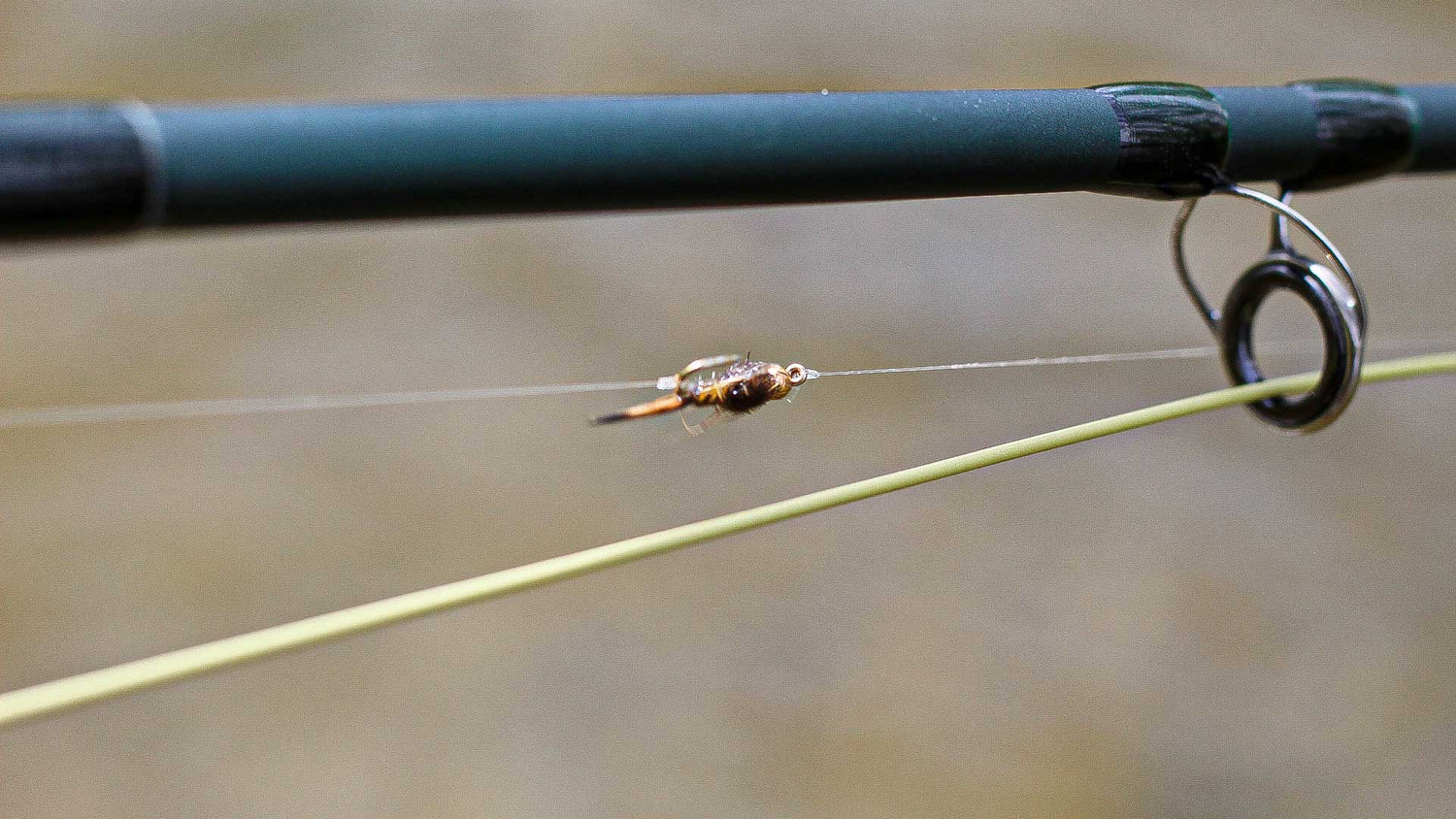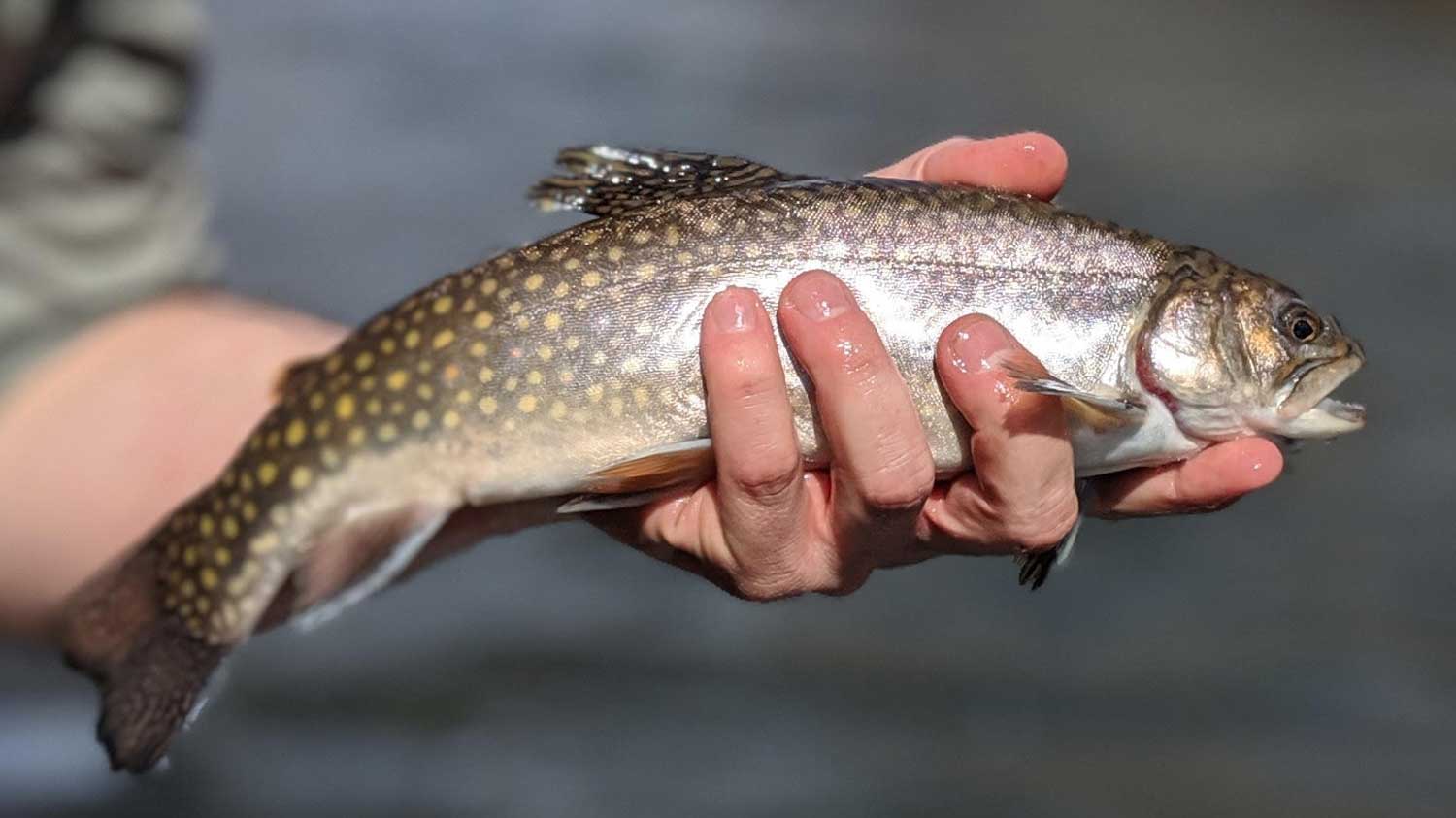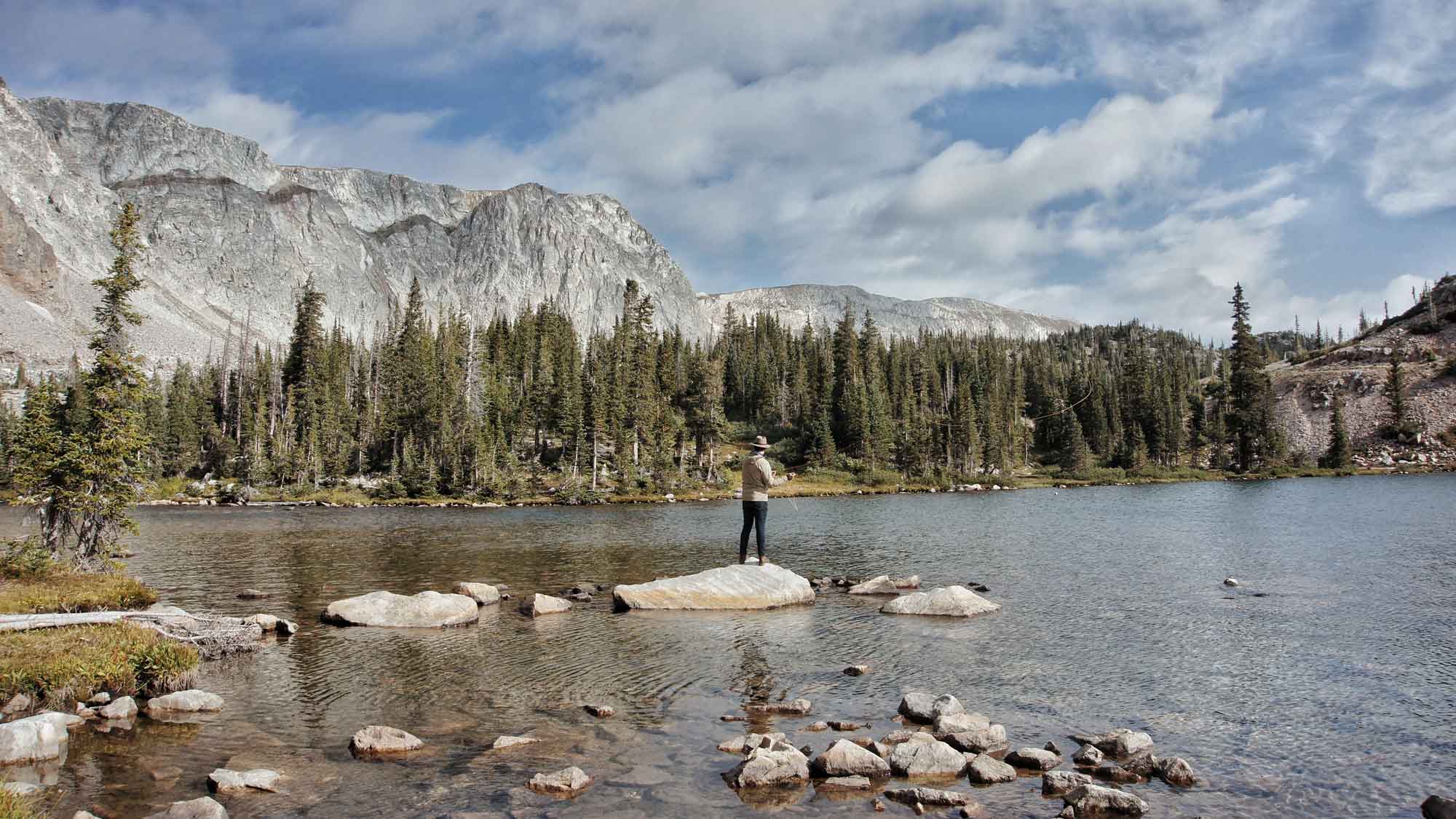For fishing enthusiasts, fly fishing is one of the most fun and rewarding ways to fish. For those not in the know, fly fishing is a type of fishing where you use a rod and artificial fly as bait. There are many different styles under this one umbrella, including fly fishing with a dropper, which allows you to catch a wide variety of fish, including under the surface and surface feeding fish.

Many fly fishers prefer fly fishing with a dropper because it is easy and very effective in catching lots of different types of fish. If you're new to fly fishing, you may want some pointers before getting out there and trying your luck. Below, we've outlined 20 basic tips, tricks, and a little advice on how to become a pro at fly fishing with a dropper.
1. What is a "Dropper," Exactly?
The first thing you want to do is familiarize yourself with the dropper you'll use in fly fishing. A dropper is an extra piece, attached with a bit of tippet to the bottom of your fake fly. The dropper is usually attached to a bead head nymph (one particular type of "fake fly"), or an emerger (an artificial midge/smaller fly), either of which is tied to the tippet, and the tippet it is attached with is usually the same length/depth as the water you're fishing.

2. What are the Advantages to Fly Fishing with a Dropper, as Opposed to Without?
There are quite a few advantages to fishing with a dropper as opposed to fly fishing with only one fly.
When it comes to regular fly fishing, the chances are that, on average, you'll do just fine without a dropper - most of the time. But there will be days when fish just aren't responding, no matter how good your technique is. That can be frustrating. Fly fishing with a dropper ensures that an extra little bit of help will result in you catching many more fish. Fly fishing with a dropper doubles your chances of catching more (and better) fish, so why wouldn't you want to give that a try?

3. What are the Disadvantages of Using a Dropper in Fly Fishing?
As with any method, there will be a few cons as well as pros. One of the main disadvantages that people complain about with droppers is that you’re more likely to see tangles in your line. The windier the weather, the more likely your line is to get tangled, and disentangling a fly fishing line is no fun at all.
Another disadvantage to using a dropper is that droppers can occasionally weaken the leader, which can cause it sometimes to snap or break off.
Most fishermen and women find that fly fishing requires a lot of room, which can be inconvenient to those who are looking to do a little fishing in tighter spaces, but this is true of all types of fly fishing and not just fly fishing with a dropper.

4. When is the Best Time/Season to Use a Dropper in Fly Fishing?
As with any type of fishing, there are good and bad times to use certain accessories. With fly fishing, using a dropper is probably best when you're fishing in small streams, creeks, or rivers where there may be a lot of fish in concentrated areas. You can also use a fly fishing dropper in open water such as lakes and reservoirs, but you'll have the most luck in areas where there is concentrated pocket water.
Fly fishing is a sport that you can do year-round. Hatches are more concentrated during the warmer months but you technically fly fish year round.

5. How Many Droppers Do I Need?
Your results may vary, as everyone's preferences and successes are different. But many find that using varied types of flies/droppers is their best bet. This is because (especially if you fly fish often in the same area), the fish can get used to the look/feel of certain droppers and become almost desensitized to them. If you switch things up and use different droppers and flies, the fish won't become used to them, and you'll have more success.
Invest in several different types of droppers and flies to have in your arsenal. Just remember that the more droppers you have on the line, the more likely it is to get tangled and cause a big mess. Only use more than one if you're experienced with droppers and confident you can handle them correctly.
Most successful/experienced fly fishermen have at least four droppers in their kit that they alternate regularly and sometimes use in conjunction with each other. You should note, though, that some fisheries only allow a fisherman to have 2-3 droppers at any given time. You’ll need to brush up on local rules and regulations before getting out on the water.

6. How Long Should the Line for my Droppers Be? How About Spacing?
A good general rule of thumb is to hang a dropper from around 6-8 inches or so. Any shorter, and your fly won't drift properly. Too long, and you risk getting tangled. Try hanging the dropper from that length, and you should have success, but play around with it and see which length works best for you, depending on where you're fishing.
As far as spacing goes, again, your results may vary. Dropper spacing depends on a whole host of variables, including the location you're fishing, the weather, your fly line, and more. A good rule of thumb is to space them an equal distance apart, usually around 8 to 12 inches or thereabouts, but again, play around with it and see what works for you. There are so many variables that it's quite different for every fisherman.

7. How Can I Avoid Tangles with Droppers? What are the Best Methods for Untangling a Line?
It's impossible to avoid tangles in the line altogether, especially for a fly fisherman who uses a dropper. As we've stated above, using a dropper increases your chances of a tangled line (though the rewards make the risk worth it). Make sure you use the appropriate lines to reduce your risk of tangling and try to use thicker lines rather than the thinner ones.
However, if your line does get tangled, there are ways to easily untangle your line so you can get back to fishing.
Tangled leaders, sometimes referred to as "wind knots," aren't exactly easy to untangle, but if you follow the correct process, you should be able to get them disengaged without too much hassle. There are a few strategies to do it successfully:
- If you're fishing with a tandem rig, go ahead and cut off the bottom fly at the hook bend. Doing this ensures that the dropper fly won't wrap itself around various points, making it even more tangled.
- Use the same method when fishing with a bushy dry fly, or a big streamer, as they will also get tangled and cause further knots while you’re trying to work on other parts of the line.
- For smaller and easier to work out tangles, leave the smaller droppers on the line. Those aren’t as bad about causing further tangles up the line, so there’s no need to cut them off.
- Most knots aren't actually knots, per se - they're just very, very tangled. This all sounds like it's obvious, but many fishermen make the mistake of cutting off the line entirely because they think it's knotted up, when in fact, if you just find the endpoint of the tangle and work your way backward, you can get the line untangled in a snap. You're basically trying to unwrap a present - just start where the tangle seems to end and go in reverse.
- Don’t ever pull on the end/dangling part of a tangle. That will inevitably only tangle the line further and strengthen the knot, making it nearly impossible to untangle it. Resist the urge!
- If you have a nipper (usually used for poking out glue eyes) in your arsenal, try using that to pull out the trickier points of a knot or tangle. You can also use a safety pin or other small, sharp device to gently tease or coax out the more steadfast parts of the knot.

8. How Do I Cast My Dropper Properly?
Casting the droppers can cause tangles if you don't do it properly, so it's right to get a technique in mind before beginning. First, open up your casting loop. Experienced fly fishers can use a tighter loop, but if you're just starting, the looser, the better, as tighter loops lead to infinitely more tangles, and you don't want that. Cast slow until you've got some experience and intuitiveness under your belt. You'll feel as you go.
9. What are the Key Tools, Accessories, and Equipment I Need for Fishing with a Dropper?
For the beginner, you'll want to have a kit or fly box with a collection of beginner's essentials to get you started. These are basic accessories and tools for fly fishing that you can obtain pretty much anywhere. This isn't an exhaustive list, but here are the essential items you want to start with:
- Fly Fishing Net with release holder (magnetic)
- Dropper Flies (you can start with a couple, but more seasoned fly fishers usually have at least four) of different types
- Polarized Sunglasses (these are essential for your safety and spotting fish easier)
- Fishing Hat (again, for safety - fishermen must protect themselves from the sun and also from false casts)
- Leader and Tippet
- Fishing Nippers or Clippers;
- Floatant;
- Strike Indicators;
- Split shot
- Fly Rod
These are your basic tools that every fisherman needs to have in his basic kit. Many fly fishermen will argue that there are many more accessories that you require, but there are plenty that are unnecessary for the beginner. For instance, while many fly fishermen swear by having items like wading belts, bug nets, waist packs, rod racks, cleats, and fly tying gear in their kits, for someone who is just starting out, almost all of these items are completely optional.
10. What is the Basic Process to Fly Fishing (with a Dropper)?
If you’ve never fly-fished before, there’s a basic process to casting the line. Here are some tips before you begin:
- Tie your nymph on the bend of the hook, determining the length by how deep you plan to fish;
- Tie the nymph with either a non-slip loop knot or an improved clinch knot, depending on your own preference/what you're comfortable with. Both of these knot types allow you to easily slip the knot over the bend allowing for the tension that will hold the knot fast.
- Use a 12-20 inch tippet for your dropper nymph, using the depth of your fishing water (and depth of feeding surface fish, if you can) as a guide;
- Use a no-slip mono knot on your trailing dropper fly if applicable to increase movement/action of the fly in the water.
To begin fly fishing a dropper rig, the process is roughly as follows:
- Cast the fly upstream
- Let your flies float downriver/down current into the feeding lane of the fish. If you want to learn more about reading water check out the video below.
- Seek to get a long drift if you can, to give the nymph time to drop into the feeding zone.
- If the hooked dry fly or indicator stops or appears tangled, be ready to set your hook.
This is just a general guide - you'll be able to use your intuition and experience to determine the best process as you go!

11. Are There "Bad" Times for Fly Fishing with a Dropper, i.e., Times I Should Not Go?
Yes and no.
There's no "bad" time to go fly fishing, but there are scenarios you want to avoid. Obviously, in cases of bad weather, or if you're in a very crowded area, you may want to consider holding off on casting that line. Certain types of fish are skittish and will swim upstream to avoid loud and disruptive behavior, so if you're in a busy or congested area, you're not likely to catch many fish.

12. What Are Some Common Mistakes to Avoid When Fly Fishing with a Dropper?
There are common mistakes that all fly fishermen make that you can avoid, sure.
"False casting" is a fishing technique that a lot of beginners fall in love with, where you move the rod backward and forwards without ever casting the line on the water. When you first use it, you may find that you catch a ton of fish, but overusing the "false casting" method can backfire big time. Try to only false cast a couple of times and then resume with the standard method. Anything else is just going to scare fish away.
Another mistake some folks make is casting too quickly. Make sure there’s an adequate amount of time between your backcast and your forward cast. Don’t pull the trigger too fast.
Many fishermen also make the mistake of using the wrong size droppers, lines, tippets, and leaders. You need to make sure that all of your fishing equipment is of adequate size, length, and is in good working shape before you begin fishing. Problems with equipment can ensure you catch no fish and can lead to further issues like tangled lines and other damage. Another point that's semi-related is tying knots too quickly or without enough force. A wrong knot can cause tangles in the line or make the dropper not hang properly. You may want to practice knot tying a bit before you head out on the water.
13. What are Some of the Best Places for Fly Fishing with a Dropper?
That depends on a lot of factors, such as where you live, what the weather's like if you live near bodies of water, parks, and so on.
As we've stated, you'll have the most success fly fishing in creeks and rivers, and bodies of water with good pockets of fish. You need an area where you can cast upstream, without too many other noisy people around crowding your space. Many people prefer to fly fish in local state parks, in rural areas with competent bodies of water.
According to Field & Stream Magazine, some of the best States for fly fishing are Montana, Colorado and Alabama, and a few countries where fly fishing is popular include Patagonia, Canada, and New Zealand - but no matter where you live or where you're planning to travel, finding a good stream or creek to cast your line won't be that difficult. Check out our article on the top 25 places in the US for fly fishing here.

14. What Kind of Fish will I Catch when I Fly Fish with a Dropper?
You can and will catch many types of fish with fly fishing using the dropper method, dozens in fact.
The most commonly caught fish with fly fishing is trout. However, you can also catch pike, bass, panfish, and carp in freshwater. In marine water, you may find that you catch redfish, tarpon, snook, bonefish, and striped bass, as well as many others.
The type of fish you catch will depend on several factors, including your location, whether you're fishing in freshwater or marine water, where/how you cast your line, and even what kind of dropper and/or fly you use.

15. Is There Such a Thing as Deep-Sea Fly Fishing with a Dropper?
Yes, many avid fly fishermen and women love to fly fish (both with a dropper and without) in the ocean. There is a specific technique to fly fishing in saltwater that differs a bit from freshwater fly fishing, but once you get the hang of it, it can be gratifying, and you'll catch some fantastic fish.
You'll need to have gear specific to deep-sea fly fishing, including special rods, lines, and reels. You'll also need to perfect your casting technique. Deep-sea fishing requires you to cast out on top of the water, which may seem counterintuitive, but with a lot of patience, you'll eventually lure a fish. You can still use flies and droppers for deep-sea fishing; you may just want to play around with them a bit to see which ones work best for you.

16. What are the Best Kinds of Flies to Use when Fly Fishing with a Dropper?
There are many different types of flies you can use when fly fishing, and every fisherman has their particular favorite. Having several different types of flies in your box is a good idea.
Some popular types of fly fishing flies include:
Dry Fly
These are designed to float and are designed to imitate the look of the adult stage of particular insects. They are generally tied with hackles, and you will primarily use these to cast upstream, where they'll float on the water for an extended period of time.
Wet Fly
A wet fly is designed to sink and lure the fish from underwater. They are generally designed to look much the same as dry flies. However, they do attract fish such as salmon and large trout.

Streamers
A streamer is designed to look like a baitfish, sculpin, crayfish, or leach. These are typically stripped in fast to envoke the trout to have a predatory reaction and take the fly.
Nymph
Nymphs are designed to look like larval insects and are a very popular type of fly to use. They sink in the water, much like wet flies, but are often used on stream bottoms and can also be used in ice fishing.
Poppers
A popper is usually made of cork-like material and designed to attract such species as Small and Large Mouth Bass. They can be plain or "popping" where they create a big wake on the surface of the water.

17. What Types of Casting Should I Use when I’m Fly Fishing with a Dropper?
There are several different types of casting in fly fishing. It is a good idea to research and practice them all to see which ones you are most comfortable with.
Backhand Cast
The backhand cast is where you cast from the opposite side of your body, casting from your dominant hand to the other hand.
Reach Cast
This is one of the more successful casts as it often produces a drag-free drift. The reach cast involves casting from the belly line to the direction where you want your line to travel.
Tuck Cast
The tuck cast is used for drag-free floating and involves a high, forward cast that is stopped abruptly. It is suitable for quickly sinking a dropper.
Roll Cast
You'll find the roll cast useful if you lack in space and can't do a back cast, as it is quite similar but with a smoother stroke.
Sidearm Cast
This cast is suitable for casting in windy weather situations or if you're burdened by lots of trees or other vegetation.
18. Do I Need a License to Fly Fish with a Dropper?
Yes. Fly Fishing, like all other types of fishing, will require the same licensing and must follow the same rules and regulations set up by your specific country, state, or county.
Before heading out to fish, make sure you're up to date on your specific area's requirements, laws, and rules, and that you have the proper licensing, fees paid, and that you're fishing in an area where you are legally permitted to do so.

19. Can Fly Fishing with a Dropper be Dangerous? What are the Risks?
Fly fishing, just like any other type of fishing, does pose some dangers, but they are minimal if you follow proper safety protocols.
The principal risks of fly fishing are danger of dehydration or sunburn, damage to the eyes without proper safety glasses, hypothermia in cold weather, drowning, snakebites or dangerous insect bites, injury, or rash from poisonous plants, and damage from hooks and other fishing equipment.
All of these risk factors can be avoided quite easily by wearing the proper equipment (such as hats, waders, wader belt, and sunglasses), applying sunscreen, carrying a first aid kit, always having water on hand, avoiding areas where there are likely to be dangerous animals or plants, and not going into remote areas alone.

20. Any Last Tips on Fly Fishing with a Dropper?
The biggest tip for any beginner who is just learning how to fly fish with a dropper is to be patient! Fly fishing is an enjoyable and rewarding activity, but it takes a great deal of patience. It is not an "instant gratification" kind of sport, and the adrenaline rush only comes when your patience pays off with a fish. It is about technique, careful casting, and patiently waiting for the fruit of your hard work and labor.
If you follow these tips, purchase only the necessary equipment, practice your knots, study and practice casting techniques to find the right one for you, and cast that line with confidence, you'll find that fly fishing with a dropper is one of your favorite past times. Fly Fishing is a sport that requires much patience, determination, practice, and talent, but even the most basic of beginners can find it rewarding and exciting. Happy Fishing, and enjoy that mass of fish you're going to catch!

About the Author
Matthew Bernhardt, a third-generation Coloradan, grew up at the forefront of the state’s fly-fishing revolution, enjoying time on the water side by side with experienced guides and lifelong anglers.
By combining his passion for fly-fishing with input from other experienced fly-fishers and guides and his fine arts degree from Colorado State University, Matthew spent five years carefully developing the Drifthook Fly Fishing System, built to help every angler catch more trout.
When he’s not spending time with his wonderful family, you’ll find him out on the water catching MONSTER trout, and he anxiously looks forward to the day when his kids are old enough to join him there.







2 comments
Stanley Ochman
I tied a turtle knot to the top flys hook,making a slip knot with a small tag to make it easier to change top fly. It also kept things in a row for easier casts and drift.
I tied a turtle knot to the top flys hook,making a slip knot with a small tag to make it easier to change top fly. It also kept things in a row for easier casts and drift.
3et Sportsbook
Really nice and helpful article.
Really nice and helpful article.